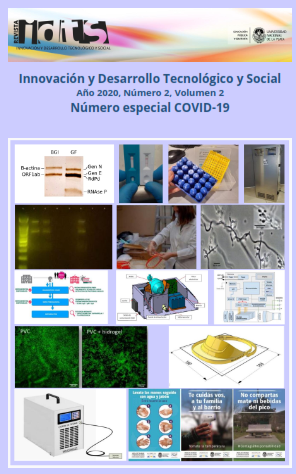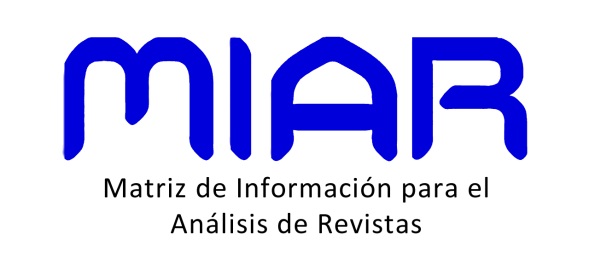SARS-CoV-2 diagnosis and viral load methods based on quantitative RT-PCR
DOI:
https://doi.org/10.24215/26838559e013Keywords:
SARS-CoV-2, COVID-19, detection, viral load, quantitative PCRAbstract
In December 2019, a new coronavirus disease (COVID-19) outbreak occurred in Wuhan, China. Severe acute respiratory syndrome-coronavirus-2 (SARS-CoV-2), which is the seventh coronavirus known to infect humans, is highly contagious and has rapidly expanded worldwide since its discovery. Quantitative nucleic acid testing has become the gold standard for diagnosis and guiding clinical decisions regarding the use of antiviral therapy. Total RNA is purified for subsequent SARS-CoV-2 detection by a real time quantitative RT-PCR (RT-qPCR). However, the RT-qPCR assays targeting SARS-CoV-2 have a number of challenges, especially in terms of primer / probe design and in the development of methodologies to estimate viral load in patients diagnosed with COVID-19.
Downloads
References
Lupia, T., Scabini, S., Pinna, S.M., Di Perri, G., De Rosa, F.G., Corcione, S. (2020). 2019-novel coronavirus outbreak: A new challenge. Journal of Global Antimicrobial Resistance, 21, 22-27. https://doi.org/10.1016/j.jgar.2020.02.021
Mahase, E. (2020) Covid-19: most patients require mechanical ventilation in first 24 hours of critical care. BMJ, 368:m1201. https://doi.org/10.1136/bmj.m1201
Rhee, C., Kanjilal, S., Baker, M., Klompas, M. (2020) Duration of SARS-CoV-2 Infectivity: When is it Safe to Discontinue Isolation? Clinical Infectious Diseases, ciaa1249. https://doi.org/10.1093/cid/ciaa1249
Chu, C.M., Poon, L.L., Cheng, V.C., Chan, K.S., Hung, I.F., Wong, M.M., Chan, K.H., Leung, W.S., Tang, B.S., Chan, V.L. y Ng, W.L. (2004) Initial viral load and the outcomes of SARS. CMAJ, 171 (11): 1349-1352. https://doi.org/10.1503/cmaj.1040398
Liu, Y., Yang, Y., Zhang, C., Huang, F., Wang, F., Yuan, J., Wang, Z., Li, J., Li, J., Feng, C. y Zhang, Z. (2020) Clinical and biochemical indexes from 2019-nCoV infected patients linked to viral loads and lung injury. Science China Life Sciences, 63 (3): 364-374. https://doi.org/10.1007/s11427-020-1643-8
Park, M., Won, J., Choi, B.Y. y Lee, C.J. (2020) Optimization of primer sets and detection protocols for SARS-CoV-2 of coronavirus disease 2019 (COVID-19) using PCR and real-time PCR. Experimental & Molecular Medicine, 52 (6): 963-77. https://doi.org/10.1038/s12276-020-0452-7
Bustin, S. y Huggett, J. (2017) qPCR primer design revisited. Biomolecular Detection and Quantification, 14:19-28. https://doi.org/10.1016/j.bdq.2017.11.001
Li, D., Zhang, J. y Li, J. (2020) Primer design for quantitative real-time PCR for the emerging Coronavirus SARS-CoV-2. Theranostics, 10 (16): 7150. https://doi.org/10.7150/thno.47649
Pan, Y., Zhang, D., Yang, P., Poon, L.L. y Wang, Q. (2020) Viral load of SARS-CoV-2 in clinical samples. The Lancet Infectious Diseases, 20 (4): 411-412. https://doi.org/10.1016/S1473-3099(20)30113-4
Yu, F., Yan, L., Wang, N., Yang, S., Wang, L., Tang, Y., Gao, G., Wang, S., Ma, C., Xie, R. y Wang, F. (2020) Quantitative detection and viral load analysis of SARS-CoV-2 in infected patients. Clinical Infectious Diseases, 71 (15), 793–798,. https://doi.org/10.1093/cid/ciaa345
Keyaerts, E., Vijgen, L., Maes, P., Duson, G., Neyts, J., Van Ranst, M. (2006) Viral load quantitation of SARS-coronavirus RNA using a one-step real-time RT-PCR. International Journal of Infectious Diseases, 10 (1): 32-37. https://doi.org/10.1016/j.ijid.2005.02.003
Downloads
Published
How to Cite
Issue
Section
License
Los autores que publiquen en esta revista aceptan las siguientes condiciones:
La aceptación del manuscrito por parte de la revista implica la no presentación simultánea a otras revistas u órganos editoriales y la cesión no exclusiva de los derechos patrimoniales de los autores en favor del editor, quien permite la reutilización, luego de su edición (postprint), bajo licencia Creative Commons 4.0 (https://creativecommons.org/licenses/by-nc/4.0/deed.es). Usted es libre de:
1) Compartir, copiar y redistribuir el material en cualquier medio o formato.
2) Adaptar, remezclar, transformar y crear a partir del material, bajo los siguientes términos: 1) Atribución — Usted debe darle crédito a esta obra de manera adecuada, proporcionando un enlace a la licencia, e indicando si se han realizado cambios. Puede hacerlo en cualquier forma razonable, pero no de forma tal que sugiera que usted o su uso tienen el apoyo del licenciante. 2) Uso No Comercial — Usted no puede hacer uso del material publicado con fines comerciales.
Los autores pueden realizar otros acuerdos contractuales independientes y adicionales para la distribución no exclusiva de la versión del artículo publicado en esta revista (p. ej., incluirlo en un repositorio institucional o publicarlo en un libro) siempre que indiquen claramente que el trabajo se publicó por primera vez en esta revista.
La responsabilidad de cada trabajo publicado en cuanto a su contenido recae exclusivamente en los autores del mismo, deslindando a los editores de cualquier responsabilidad legal.


















